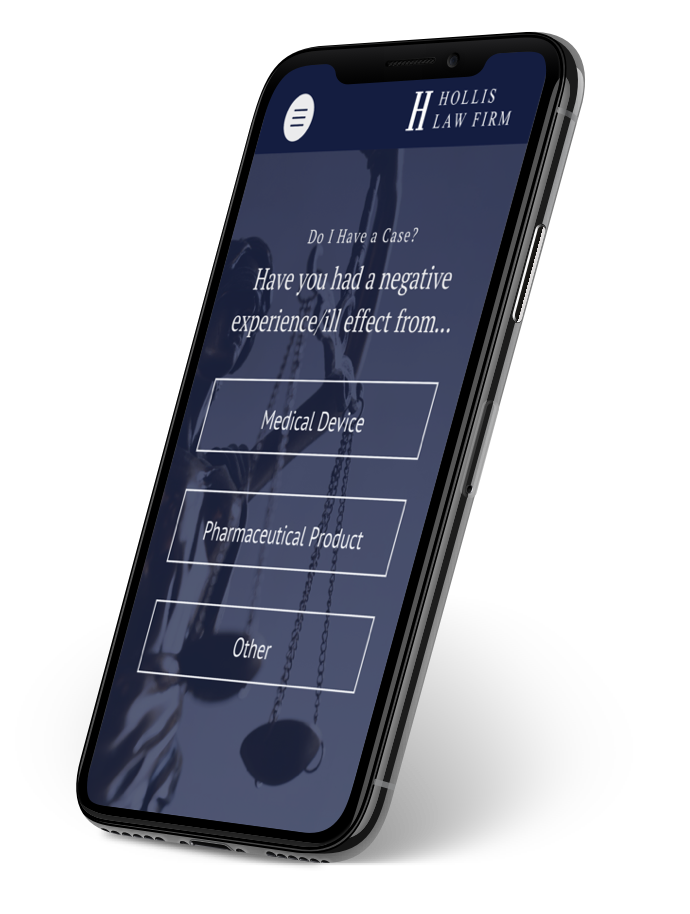Parietex Lawsuit Information
Introduction
The original Parietex was introduced to the market in 1999 and was a non-coated mesh. The original Parietex had many weaknesses and design defects, which Covidien has attempted to fix in later versions of the Parietex. No human trials were conducted with the Parietex hernia mesh before it was sold.
History of the Case
Parietex Design Defects
Poor Handling
The original Parietex hernia mesh was made of heavy-weight Polyester, which causes many complications similar to polypropylene, but also has some additional weaknesses. Unlike polypropylene which is stiffer and can keep its shape, polyester is soft and flimsy. Many surgeons reported problems with being able to properly manipulate the Parietex during implantation. In an attempt to rectify this problem, Covidien added a collagen layer to subsequent versions of the Parietex, such as the Parietex Composite and the Parietex ProGrip. In 2009, Covidien came out with the Parietex monofilament polyester mesh, which is made from a light-weight polyester. However, the light-weigh version of the Parietex continues to cause high rates of complications.
Unsealed Edges
Most hernia meshes on the market have some sort of a sealed or smooth edge. However the Parietex has an unsealed edge, exposing the end of hundreds of polyester fibers. After implantation, these polyester fibers become much harder and can perforate the bowel or other underlying organs. Not having a sealed edge also increases the ability of the individual polyester fibers to fray and unravel. Once the Parietex begins to unravel, it becomes even more susceptible to tearing away from the tacks or sutures securing it. As the Parietex frays and unravels, small polyester fibers break away from the mesh. These small polyester fibers then travel throughout the body and become embed in other tissue. Each individual polyester fiber then chronically incites its own inflammatory response. Covidien decided to keep the unsealed edges on both the Parietex Composite and the Parietex ProGrip.
Prone to Tearing
Covidien’s Parietex hernia mesh shrinks and contracts to a significant degree after it is implanted. The polyester fibers that create the Parietex are weaker than the titanium tacks or polypropylene sutures used to secure the mesh. Because of this, the polyester fibers will tear on the securing tacks or sutures after tension increases due to the Parietex contracting. Once the mesh tears, the patient re-herniates and the Parietex can migrate or ball up. Covidien’s solution to the tearing was the Parietex ProGrip, to which they added thousands of “micro-hooks” so that sutures or tacks wouldn’t be needed to secure the mesh.
Parietex Composite Hernia Mesh
In the late 90’s Covidien set itself apart from other hernia mesh manufacturers and gained a foothold in the market by focusing primarily on creating hernia meshes out of polyester instead of polypropylene. However, by the early 2000’s Covidien faced two challenges in maintaining its market share. First, Covidien’s polyester mesh was more difficult for surgeons to handle than the feasible available alternative hernia meshes. Second, the manufacturers of polypropylene based hernia meshes had started applying coatings to their meshes so that they could be inserted easily via laparoscopic surgeries and placed close to the bowel. Covidien then added a thin collagen film to the Parietex and called the new mesh the Parietex Composite. The collagen film improved handling of the Parietex Composite, but failed miserably at protecting a patient’s bowel from the polyester. After implantation, the collagen film quickly disintegrates and exposes bare polyester to any underlying organs. Infections and dense adhesions to the bowel resulting in bowel obstructions are common with the Parietex Composite. No human trials were conducted with the Parietex Composite before it was sold. Learn more at our Parietex Composite Lawsuit page.
Parietex ProGrip
Covidien continued to be plagued by its polyester based hernia meshes tearing on tacks and sutures, because polyester meshes contract. The underlying problem with the Parietex mesh line is that it contracts, not that it tears on sutures and tacks. The Parietex tearing is a result of the mesh contracting. Covidien should have recalled the entire Parietex mesh line, because there is nothing that can be done to fix the underlying defect of the Parietex shrinking over time. However, Covidien decided they could continue making money on the Parietex mesh line if they fixed the “problem” of the mesh tearing on tacks or sutures. Covidien’s patchwork solution was to attach thousands of “micro-grips” to the polyester to create the Parietex ProGrip. While Covidien’s solution does alleviate the need to use sutures or tacks, it doesn’t solve the underlying problem of mesh contraction. The Parietex ProGrip’s 5,000 Velcro-like micro-grips all hook securely into a patient’s underlying tissue. If 5,000 micro-grips in the groin isn’t painful enough, the Parietex will then start to contract, pulling and stretching the underlying tissue from 5,000 points of attachment. The pain is absolutely debilitating. Oh, and here’s there kicker, it’s attached in 5,000 spots so it’s nearly impossible to remove. To explant the ProGrip, it has to be cut out in little pieces along with all the underlying tissue. It typically takes several operations just to get a majority of the ProGrip removed. No human trials were conducted with the Parietex ProGrip before it was sold. Learn more at our Parietex ProGrip Lawsuit page.
Injuries Related To Product
If you’ve experienced one of the following injuries, you may have a claim in the hernia mesh lawsuit.
- Severe or chronic pain.
- Serious infection.
- Mesh shrinkage.
- Mesh migration.
- Organ perforation.
- Bowel obstruction.
- Bowel adhesion.
- Hernia recurrence.
Additional Literature
August 2012
Comparative Analysis of Histopathologic Effects of Synthetic Meshes Based on Material, Weight, and Pore Size in Mice.
The degree to which various synthetic materials resulted in mesh-induced chronic inflammation and scarring was evaluated, because chronic inflammation and scarring can cause chronic pain and limited mobility. The researchers found that “polyester mesh induced the greatest FBR [Foreign Body Response] and lasting chronic inflammatory response.”…Continue
October 2000
Polymers in Hernia Repair – Common Polyester vs. Polypropylene Surgical Meshes.
The tissue and inflammatory response caused by various meshes was compared. The researchers noted that “Mersilene showed an excellent and relatively inert tissue reaction of the interface compared to Prolene and Parietex.”…Continue
April 1998
Long-Term Complications Associated with Prosthetic Repair of Incisional Hernias.
A retrospective study evaluated how various prosthetic materials and implantation techniques influenced long-term complications after hernia repair during the period of 1985 to 1994. The researchers found that “polyester mesh had a significantly higher mean number of complications per patient, a higher incidence of fistula formation, a greater number of infections, and more recurrent hernias than the other materials used. The additional mean length of stay to treat complications was also significantly longer (30 vs 3-7 days) when polyester mesh was used. The deleterious effect of polyester mesh on long-term complications was confirmed on multiple logistic regression.” Additionally, the researchers concluded that “Polyester mesh should no longer be used for incisional hernia repair.” …Continue










